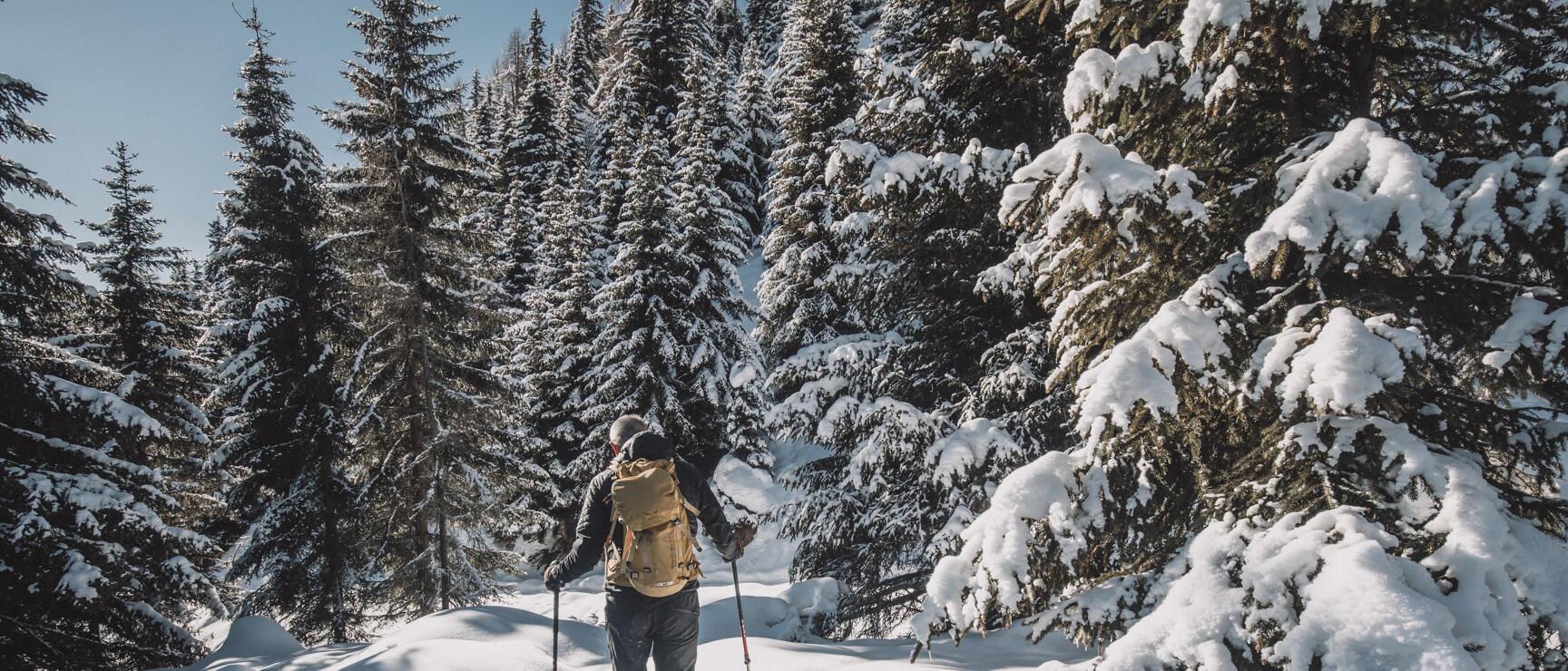
Snowshoe Hiking in Austria
Following winter's trails
Whether you should embark on a snowshoe hike on your own depends on the area, your fitness level, your experience, and the weather and snow conditions.
If you go on a snowshoe hike with a national park ranger, there's a good chance you might spot one of the "Big Five of the Alps": ibex, golden eagle, ptarmigan, chamois, and bearded vulture. These elusive animals are rarely seen in winter, but the ranger knows the best times and places to spot them, for instance in the Hohe Tauern National Park.
They also know the names of the 3,000-metre / 9,800-foot peaks whose rugged, white summits tower into the sky. The Grossglockner and Grossvenediger, the two highest, are usually memorable even to first-time visitors. An added benefit of this adventurous snowshoe hike is the wonderful feeling of happiness as the everyday stresses gradually melt away.
Snowshoe hiking in Austria's provinces
Snowshoe hiking in Austria's regions
Did you know, that ...
... snowshoes already existed around 12,000 years ago? Ancient rock paintings prove it.
... the extended, moderate activity of snowshoeing boosts fat burning?
... snowshoeing's endurance training positively impacts the cardiovascular system?
... in Mongolia, 6,000-year-old snowshoes were found? They were wooden planks wrapped in fur.